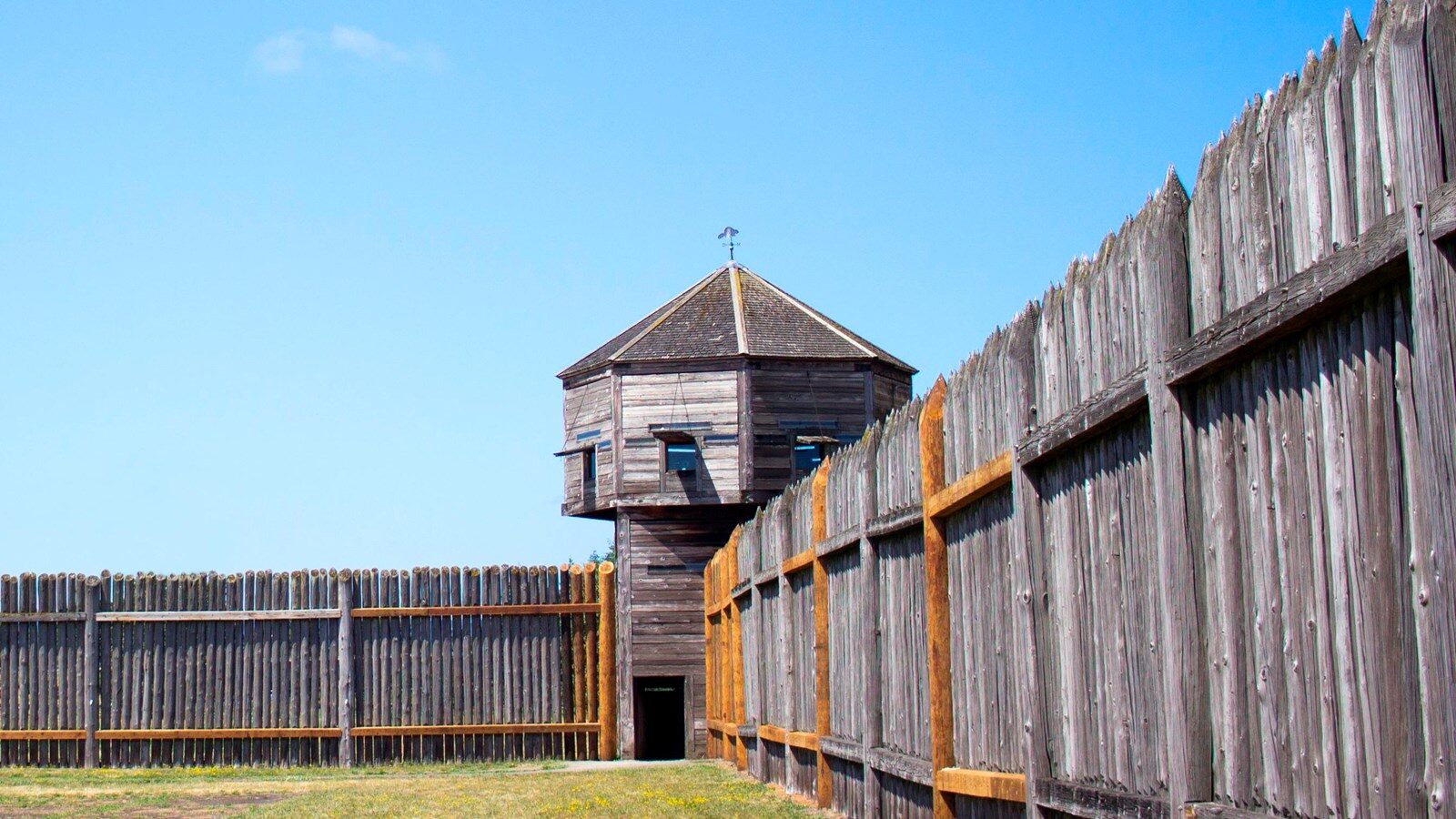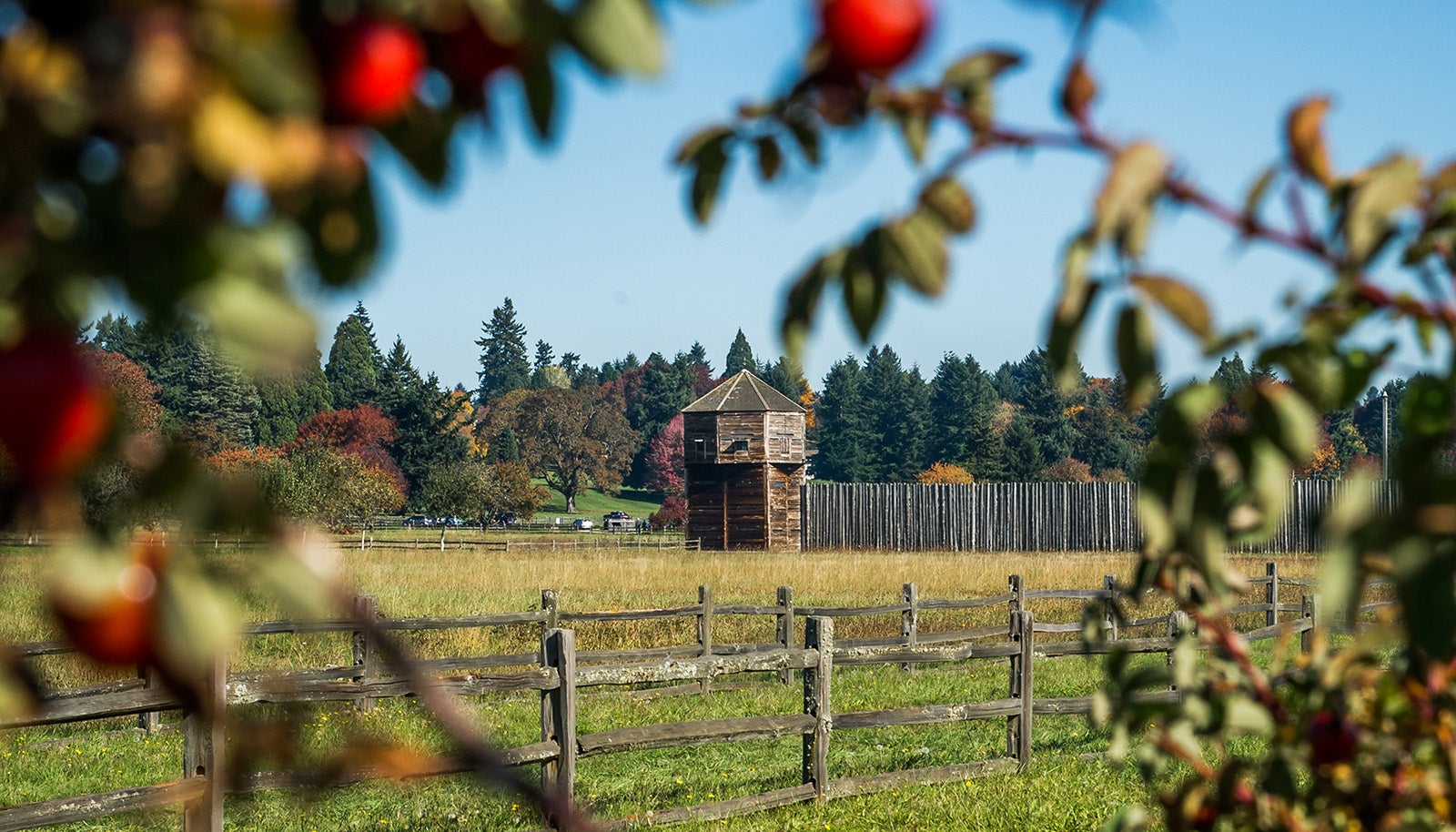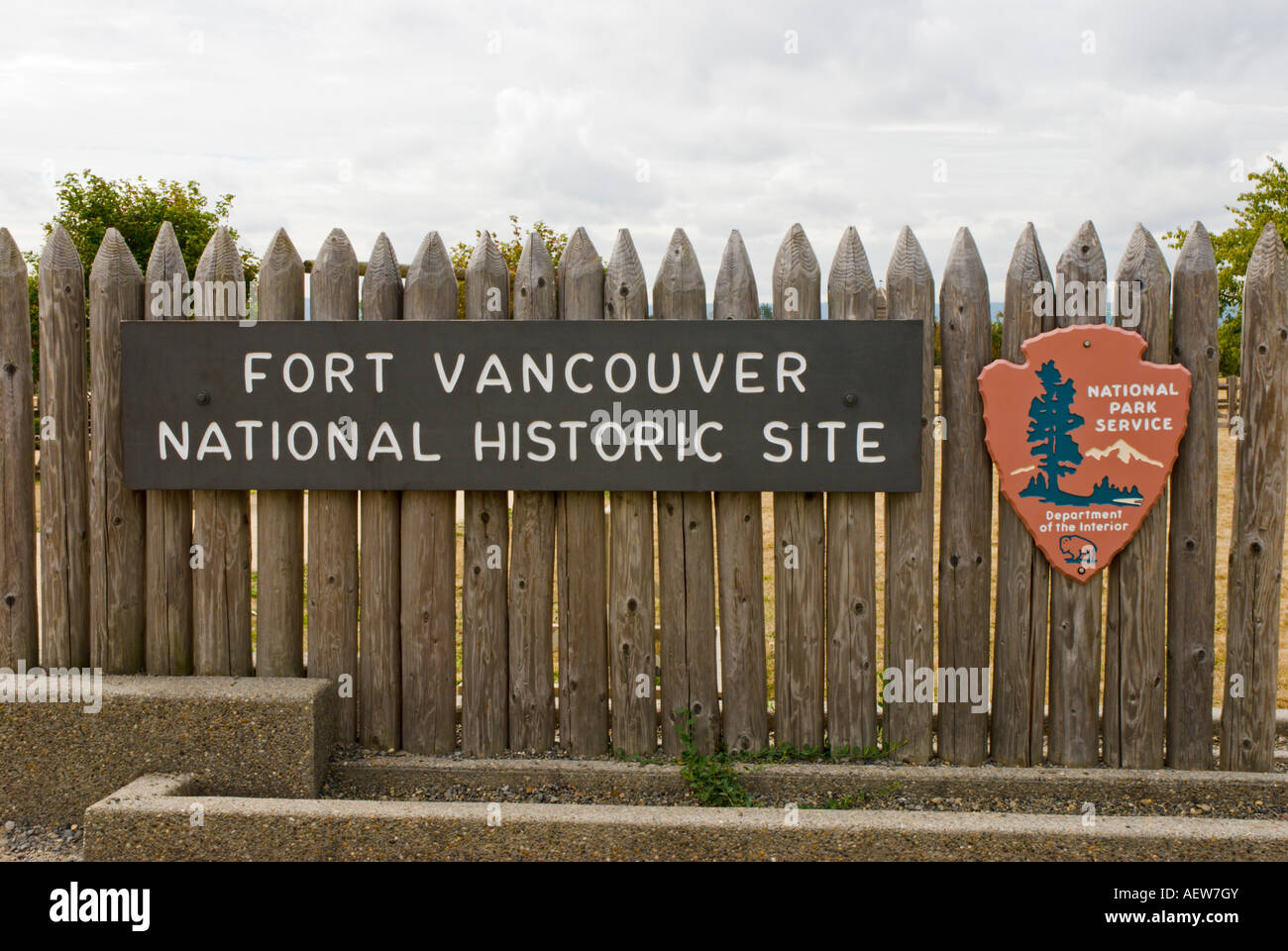
Whispers from the Wild: Exploring America’s Enduring Legends from Fort Vancouver to the Far Reaches
America, a nation forged in revolution and expansion, is as much a land of legend as it is of documented history. Its vast landscapes, diverse cultures, and tumultuous past have given rise to a rich tapestry of folklore – tales of heroes and villains, mythical beasts, and unexplained phenomena that continue to captivate the imagination. These legends are more than mere stories; they are the unwritten history of a people, reflecting their hopes, fears, and the very spirit of the land itself. From the ancient oral traditions of its first inhabitants to the frontier yarns spun around crackling campfires, America’s legends offer a unique lens through which to understand its evolving identity.
To truly grasp the essence of these tales, one might consider a place where multiple worlds converged, a crucible of cultures where stories were not only told but born anew: Fort Vancouver, Washington. Nestled on the north bank of the Columbia River, this former headquarters of the Hudson’s Bay Company’s Columbia Department was, in the 19th century, a bustling hub of trade, diplomacy, and daily life. It was a place where Native American narratives met European folklore, where the harsh realities of frontier existence intertwined with the human need for myth. Fort Vancouver, in its very essence, embodies the spirit of American legend-making.
The Land’s First Voices: Native American Lore

Long before European settlers arrived, the lands now known as America pulsed with stories passed down through generations. Indigenous cultures, deeply connected to the natural world, explained creation, natural phenomena, and moral lessons through intricate oral traditions. The Pacific Northwest, the home of Fort Vancouver, is particularly rich in these narratives. The Chinook, Nez Perce, Cowlitz, and other tribes shared tales of powerful animal spirits like Coyote, Raven, and Bear, who often acted as tricksters, creators, or guides. Mountains, rivers, and forests were not merely geographical features but imbued with spiritual significance and ancient memories.
Consider the tales of the "Spirit of the Mountain," often associated with Mount St. Helens or Mount Hood, mountains visible from the vicinity of Fort Vancouver. These stories spoke of powerful beings residing within the peaks, sometimes benevolent, sometimes wrathful, shaping the landscape and the lives of those below. The convergence of numerous tribes at Fort Vancouver, drawn by trade and interaction, meant that these diverse stories were shared, debated, and perhaps even influenced by the newcomers’ perspectives, creating a fertile ground for the evolution of regional folklore. The Indigenous people who worked, traded, and lived near the fort brought with them a profound understanding of the land’s spiritual geography, a knowledge that seeped into the very fabric of the burgeoning American frontier.
Forging the Frontier: Tall Tales and Mythologized Heroes
As European settlers pushed westward, encountering vast, untamed wilderness and unimaginable challenges, a new genre of legend emerged: the tall tale. These exaggerated narratives, often humorous and larger-than-life, served multiple purposes. They were a way to cope with the harsh realities of frontier life, to celebrate ingenuity and strength, and to forge a collective identity for a nation constantly reinventing itself. Figures like Paul Bunyan, the colossal lumberjack whose blue ox, Babe, carved out the Great Lakes, or Pecos Bill, the cowboy who rode a cyclone and tamed the wildest West, became symbols of American grit and boundless possibility.
These tales were undoubtedly spun and retold around the campfires and in the mess halls of places like Fort Vancouver. The fur traders, trappers, and explorers who passed through its gates were themselves figures of epic endurance, navigating treacherous rivers and dense forests. Their own experiences, already extraordinary, would have provided fertile ground for embellishment. Imagine a grizzled trapper, fresh from a season in the wilderness, recounting a bear encounter so fierce it could only be topped by the next storyteller’s tale of a mountain lion the size of a wagon. The fort, a beacon of civilization in a wild land, was a natural stage for such dramatic retellings, where the lines between fact and fiction blurred with each passing glass of rum.
Beyond the purely fictional, real historical figures were often elevated to legendary status, their deeds magnified and their characters idealized. Davy Crockett, the "King of the Wild Frontier," Johnny Appleseed, the benevolent planter, and Molly Pitcher, the Revolutionary War heroine, all began as real people whose stories resonated so deeply with the American psyche that they transcended mere biography to become archetypes of courage, perseverance, and generosity. These legends helped to define what it meant to be "American" – embodying the spirit of rugged individualism, self-reliance, and a pioneering spirit that pushed boundaries.
Outlaws, Lawmen, and the Wild West’s Romanticized Edge
The American West, a landscape of vast plains, rugged mountains, and burgeoning towns, became the backdrop for another powerful set of legends: those of outlaws and lawmen. Figures like Jesse James, Billy the Kid, and Wyatt Earp transcended their historical realities to become symbols of rebellion, justice, or the blurred lines between them. These stories, often romanticized and sensationalized, explored themes of freedom, retribution, and the struggle between good and evil in a land where law and order were often distant and tenuous.

While Fort Vancouver itself was a relatively orderly outpost under the Hudson’s Bay Company’s strict governance, the wider American West, just a few hundred miles to the east, was in the throes of this dramatic period. The tales of gunfights, bank robberies, and daring escapes would have reached the fort through newspapers, traders, and travelers, adding another layer to the growing American mythology. The fascination with those who lived outside the law, or those who enforced it with their own brand of frontier justice, spoke to a deeper cultural conversation about individualism versus societal control, a tension that remains palpable in American identity.
The Unseen and Unexplained: Cryptids and Ghosts
Perhaps the most enduring and universally appealing American legends are those that delve into the supernatural and the unexplained. From spectral apparitions to cryptids lurking in the wilderness, these stories tap into humanity’s primal fear of the unknown and our innate curiosity about what lies beyond the veil of ordinary perception.
In the Pacific Northwest, the most famous cryptid is undoubtedly Bigfoot, or Sasquatch. Descriptions of a large, hairy, bipedal creature roaming the dense forests date back to Native American folklore, long before the term "Bigfoot" entered popular lexicon. The vast, often impenetrable wilderness surrounding Fort Vancouver provides the perfect habitat for such a creature, and tales of strange tracks, eerie calls, and fleeting glimpses of a forest giant have been shared for centuries. The fort’s location, at the edge of this wild frontier, would have been a natural breeding ground for such speculation, where the mysterious sounds of the forest could easily be attributed to something otherworldly.
Beyond Bigfoot, America boasts a pantheon of cryptids: the Mothman of West Virginia, the Jersey Devil of the Pine Barrens, and the Chupacabra of the Southwest. Each region has its own monstrous legends, often rooted in local fears, environmental peculiarities, or cultural anxieties. Similarly, ghost stories abound in old houses, battlefields, and historic sites across the country. Fort Vancouver, with its century-old buildings and history of human triumph and tragedy, is no stranger to such tales. Whispers of spectral figures in the reconstructed Chief Factor’s House or unexplained occurrences in the barracks could easily become part of the fort’s own localized folklore, adding a layer of eerie charm to its historical significance. The exchange of life and death, the convergence of so many diverse souls, leaves an energetic imprint that naturally gives rise to tales of the spectral.
Fort Vancouver: A Nexus of Storytelling
Fort Vancouver stands as a powerful symbol of how these diverse streams of legend converged and continued to flow. As the primary economic and social center of the Pacific Northwest for nearly three decades, it was a true multicultural melting pot. British, American, French-Canadian, Hawaiian, Iroquois, Chinook, Nez Perce, and countless other peoples lived, worked, and traded within its palisades. Each group brought their own stories, myths, and superstitions, which mingled and merged in this vibrant frontier outpost.
Imagine the evenings at the fort: a Chinook elder sharing a creation myth by a crackling fire, a French-Canadian voyageur recounting a tale of the loup-garou (werewolf) from his homeland, an American trapper spinning a yarn about a giant grizzly bear, and a Hawaiian laborer sharing stories of Pele, the volcano goddess. These exchanges weren’t just entertainment; they were a form of cultural negotiation, a way of understanding and adapting to a new, shared reality. The very act of living and working together, often in challenging conditions, fostered a sense of community that encouraged the sharing and evolution of these narratives.
The legacy of Fort Vancouver, therefore, is not just one of commerce and colonial power, but also one of profound cultural exchange and storytelling. It represents a pivotal moment in the birth of American legends – a place where ancient indigenous wisdom met European folklore, where the rigors of the frontier gave rise to new heroes and monsters, and where the human need to make sense of the world, both seen and unseen, found fertile ground.
The Enduring Power of Myth
America’s legends, from the ancient spirits of the land to the larger-than-life figures of the frontier, continue to shape its identity. They are a testament to the nation’s vastness, its diversity, and its enduring fascination with the extraordinary. These stories, whether based on historical figures or born purely from imagination, provide a collective memory, a shared understanding of what it means to be American. They reflect the nation’s struggles, its triumphs, and its perpetual journey of self-discovery.
From the towering peaks that inspired Native American reverence to the dense forests where Bigfoot is said to roam, from the dusty trails where outlaws rode to the bustling fort where cultures collided, America’s legends are an integral part of its soul. They remind us that history is not just a collection of facts, but a living, breathing narrative, constantly being retold, reinterpreted, and reimagined, ensuring that the whispers from the wild continue to echo through generations.


